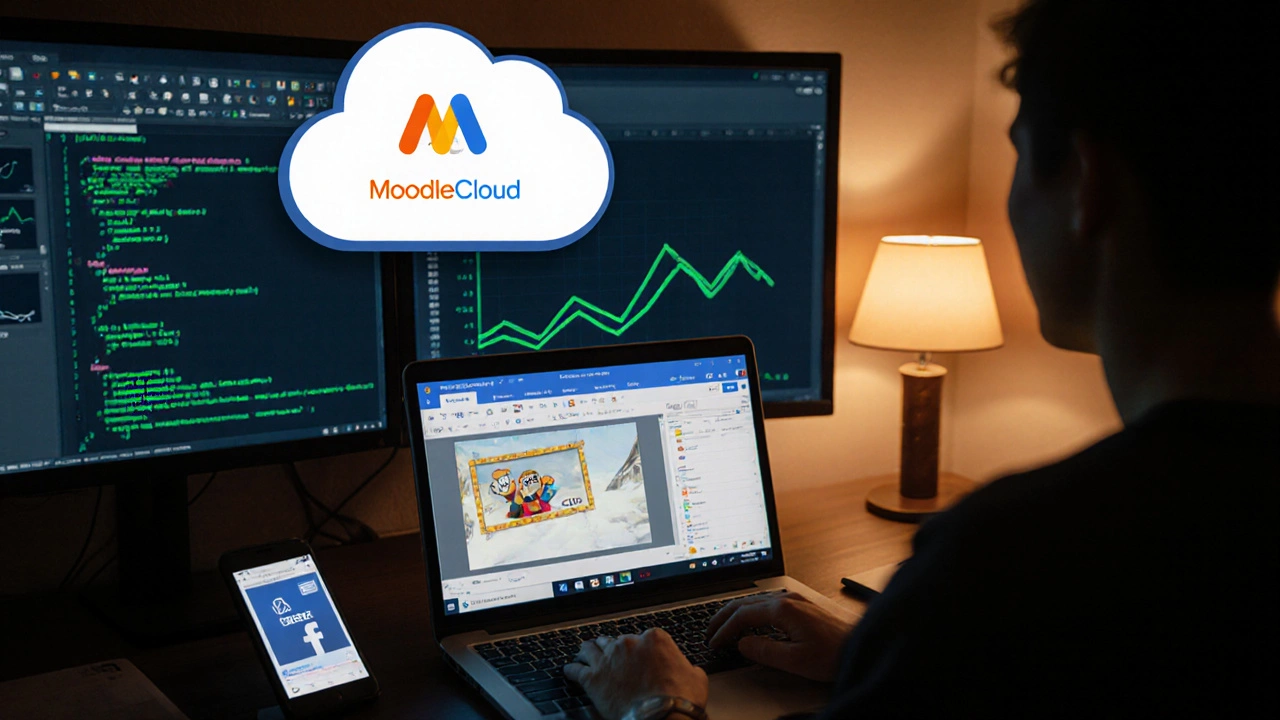eLearning Essentials Checker
Check if your eLearning example meets all the essential criteria discussed in the article. This tool will help you identify missing components and suggest improvements.
Your eLearning Example Status
0% CompleteThis section shows which elements you've included and what's missing.
Recommendations for Improvement
Ever wonder what a real eLearning example looks like beyond the buzzwords? In the next few minutes you’ll get a clear picture of a working online learning program, why it clicks for learners, and how you could build a simple version yourself.
Quick Takeaways
- eLearning is a digital delivery of education that can be accessed anytime, anywhere.
- Massive Open Online Courses (MOOC) are the most recognizable eLearning example.
- Key building blocks include a Learning Management System, SCORM‑compatible content, and interactive activities.
- Creating your own eLearning module only requires a content authoring tool and a simple LMS.
- Check the final checklist to make sure your example hits all the essential pieces.
What Exactly Is eLearning?
eLearning refers to any education or training delivered via electronic devices such as computers, tablets, or smartphones. It replaces or supplements traditional classroom time with digital resources - videos, quizzes, discussion boards, and more. The appeal? Learners control pace, location, and often cost.
A Real‑World Example: A MOOC on Data Science
Picture a popular data‑science MOOC running on a platform like Coursera. Here’s how the pieces fit together:
- Learning Management System (LMS) acts as the backbone, hosting videos, assignments, and tracking progress.
- The course content is packaged in SCORM (Sharable Content Object Reference Model), a standard that lets modules communicate with the LMS about completion status.
- Each week includes a short lecture video, a reading, a quiz, and a discussion prompt - a blend of microlearning bite‑size activities that fit into a busy schedule.
- Because the MOOC is open to anyone, it follows a blended learning model where digital self‑study is combined with optional live Q&A sessions.
- All interactions happen asynchronous - learners can watch videos or submit assignments whenever they want.
The result is a fully functional eLearning experience that scales to thousands of participants without a single physical classroom.
Breaking Down the Core Components
Even if you’re not launching a global MOOC, any eLearning example will include these essential elements:
- Content Authoring Tool: Software like Articulate Rise, iSpring, or even PowerPoint + HTML export that lets you create interactive lessons.
- Learning Management System (LMS): A platform that stores content, registers users, and reports scores. Open‑source options include Moodle and Canvas.
- Standardized Packaging (SCORM or xAPI): Guarantees that the lesson’s quiz results, completion flags, and time‑on‑task data are communicated back to the LMS.
- Engagement Mechanics: Videos, quizzes, drag‑and‑drop activities, forums, and gamified badges that keep learners motivated.
- Delivery Mode: Primarily asynchronous, but many programs blend in live webinars for deeper interaction.
How to Build a Simple eLearning Example in One Day
If you want to try it yourself, follow these seven steps. No fancy budget required.
- Pick a content authoring tool. Free options like Google Slides + H5P work well.
- Draft a short lesson (5‑10 minutes) on a topic you know - say, “How to brew a perfect espresso.”
- Add at least one interactive element: a multiple‑choice quiz or a drag‑to‑order activity.
- Export the lesson as a SCORM package (many tools have a one‑click export).
- Create a free LMS account on MoodleCloud or Canvas Free.
- Upload the SCORM package to a new course.
- Set the course to “self‑enroll” so anyone with the link can join.
- Publish the enrollment link on a blog or social media and invite a few friends to test.
- Review the LMS reports to see who completed the quiz, how long they spent, and where they stumbled.
That’s a complete eLearning example - from idea to live, trackable experience - built in under eight hours.

Comparison of Popular eLearning Example Types
| Format | Typical Audience | Cost to Produce | Scalability | Interaction Level |
|---|---|---|---|---|
| MOOC | Mass public | High (professional video, staff) | Very high (thousands) | Medium (forums, peer grading) |
| Corporate LMS Module | Employees | Medium (in‑house studio) | High (company‑wide) | High (scenario‑based sims) |
| Microlearning App | Busy professionals | Low‑Medium (mobile‑first tools) | High (app downloads) | High (push quizzes, gamified streaks) |
Checklist: Does Your Example Meet All the Essentials?
- ✅ Defined learning objective
- ✅ Created with a content authoring tool
- ✅ Packaged in SCORM or xAPI
- ✅ Hosted on an LMS that can track progress
- ✅ Includes at least one interactive element
- ✅ Delivered asynchronously with optional live support
- ✅ Collected analytics for improvement
If you tick all the boxes, you’ve built a solid eLearning example that mirrors the structure of professional courses.
Frequently Asked Questions
What counts as an eLearning example?
Any digital learning experience that delivers content, tracks progress, and offers interaction - from a single YouTube tutorial to a full‑scale MOOC - qualifies as an eLearning example.
Do I need a pricey LMS to start?
No. Free MoodleCloud or Canvas accounts let you host small SCORM packages without any cost.
What’s the difference between SCORM and xAPI?
SCORM focuses on basic tracking (completion, score) within a traditional LMS, while xAPI (Tin Can) records detailed learning events across multiple platforms, making it more flexible for modern analytics.
Can I use free tools to create interactive content?
Yes. H5P, Google Slides combined with add‑ons, and Canva’s animation features let you build engaging activities without a license.
How do I measure success of my eLearning example?
Look at completion rates, quiz scores, time‑on‑task, and post‑learning surveys. Most LMS dashboards surface these metrics automatically.
